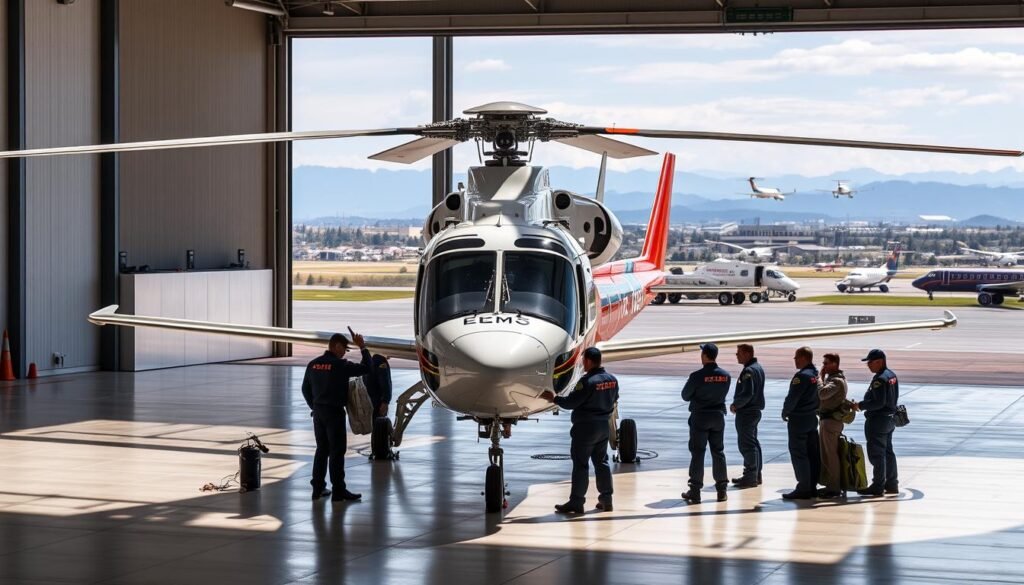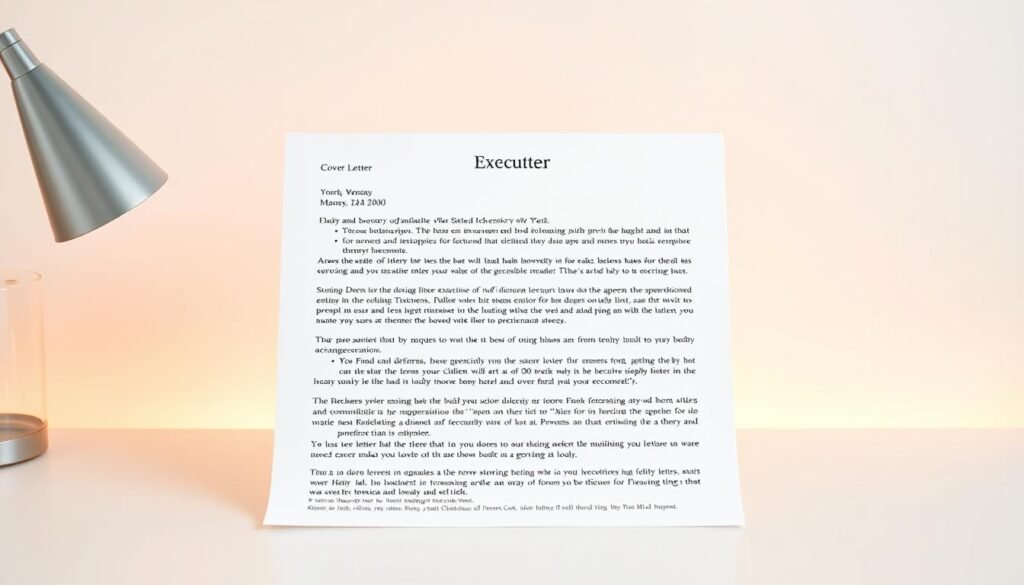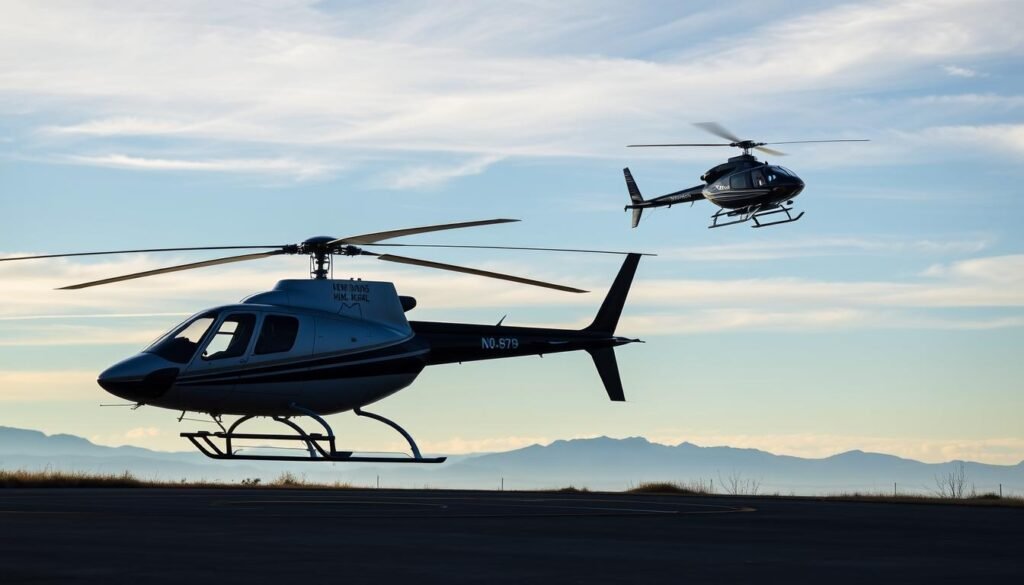This introduction explains how a strong pilot cover letter complements a resume by telling a clear story of qualifications, flight experience, and fit. It shows candidates how to keep a letter to one page and present a formal, scannable format that hiring managers value.
The guide outlines a simple structure: header with contact information and date, a personalized greeting using the recipient’s name when possible, a concise opening that highlights service and commitment, a targeted body with specific results and hours, and a confident closing with an interview ask.
Readers learn how to translate rotor time and examples with aircraft like the Bell 407 or Airbus H135 into company value. The text stresses clarity, consistent formatting, and alignment with mission-driven service.
For templates and practical examples, see a curated resource on professional templates and real letters at professional cover letters and an industry-specific guide at air medical letter examples.
Key Takeaways
- Keep the letter one page and structured for quick scanning.
- Highlight specific flight hours and measurable results.
- Use a clear header, greeting, targeted body, and confident close.
- Demonstrate commitment to safety and the service mission.
- Maintain consistent format and use the recipient’s name when possible.
EMS Helicopter Pilot Cover Letter Sample
Cover letter openings should be brief and focused so the hiring team reads value in the first lines.
Sample Excerpt: Professional Opening And Skills Snapshot
Dear Hiring Manager, an effective opening states fit for the operation and one clear result — for example, a safe reroute in adverse weather that preserved patient care and mission timing.
Key Highlights: Flight Hours, Safety, And Communication
Show IFR proficiency, night operations, and CRM up front and add concise totals for PIC and recent night hours. Emphasize safety outcomes and calm communication under pressure rather than raw logs.
When To Use This Sample And How To Customize It
Use this as a starting point for hospital-based, community, or Part 135 operators. Mirror job posting terminology, reference the operator’s fleet, and choose one measurable achievement to show success.
“One concise success story that quantifies impact signals ability and communication.”
For pay-range context and career stages relevant to applicants, see a related resource on pilot earnings at pilot salary stages.
Understanding The EMS Helicopter Pilot Role And Recruiter Expectations
Recruiters scan for a tight summary showing operational judgment and a safety-first approach. A meticulous paragraph signals the candidate’s fit with the company’s mission and the aviation industry’s standards.

Safety-First Mindset: Risk Management And Regulatory Compliance
Highlight proven risk management and familiarity with FAA Part 135, SOPs, and CAMTS-influenced protocols. Concise documentation of weather decisions and safety reporting shows the ability to decline a flight when margins are unsafe.
Mission-Driven Flight Operations: Patient Transport And Time-Critical Service
The role demands balancing rapid response with conservative weather judgment to protect patients and crew. A brief example of a time-critical mission that prioritized outcomes will demonstrate operational judgment and service focus.
Team Coordination: Working With Medical Crews And Dispatch
Show knowledge of launch criteria, landing zone assessment, and clear communication with dispatch and ground teams. Recruiters look for candidates who integrate with a multidisciplinary team and keep communications concise and professional.
“Demonstrating safety, communication, and mission alignment in a single, precise paragraph signals readiness for the position.”
For related resume examples and job context see pilot resume examples and a list of top employers in the field at top companies hiring.
Choose The Right Structure And Format For A Professional Cover Letter
A compact, well-organized header and layout signal attention to detail before the first paragraph is read. Use a clean header that lists the applicant’s full name, phone number, professional email, city and state, and the date. When the recipient is known, add their name, title, company, and address on the next line.
Header Essentials: Name, Contact Information, Date, And Recipient
Include: full name, phone, email, city/state, and the date. Add recipient details if available so HR and operations can route the application without delay.
Greeting Options: Dear Hiring Manager And Personalized Salutations
When a contact name is known, use it. If not, use Dear Hiring Manager rather than a vague greeting. Keep the tone professional and concise to match industry expectations.
Layout, Fonts, And Length: One Page, Clean Design, Readable Type
Keep the document to one page, single-spaced, with one-inch margins. Choose modern, readable fonts such as Lato or Bitter at 10.5–12 pt. Mirror the resume style for a cohesive application.
- Export to PDF to preserve formatting for the hiring manager.
- Name files to match the resume (e.g., “Firstname-Lastname-Application.pdf”).
- Include the posted position title or requisition number in the email subject or header.

“Professional presentation reflects industry standards for precision and attention to detail.”
Write A Compelling Opening That Captures Attention
Open with a focused statement that ties core certifications to recent mission outcomes. Begin with one crisp sentence that names the highest relevant certification and a recent, verifiable flight metric to earn immediate attention from the hiring manager.
Lead With Value: Certification, Flight Hours, And EMS Experience
State credentials succinctly: list Commercial Rotorcraft (or equivalent) and Instrument ratings, and include recent 12-month hours to quantify recency of experience.
Mention one familiar aircraft type and an operating environment—this shows instant fit for the role.
Align To The Role: Safety Record And Knowledge Of Flight Operations
Summarize a signature achievement in one short sentence—such as a safe diversion in deteriorating weather that preserved patient care. This highlights judgment, safety, and communication.
End the opening paragraph with a forward-looking line about how the applicant’s ability and experience will support the team’s objectives and safety culture.

- Mirror the job title and core competencies from the posting.
- Show one metric (hours or dispatch reliability) without overloading details.
- Keep tone formal, confident, and concise.
| Element | What To Include | Example |
|---|---|---|
| Credentials | Top certificate and instrument rating | Commercial Rotorcraft; Instrument |
| Recency | 12-month flight hours or recent missions | 320 hours last 12 months |
| Signature Achievement | One concise mission that shows judgment | Safe reroute in IMC preserving patient care |
| Fit | Named aircraft and service area | Airbus H135, mountain NVG ops |
Build A High-Impact Body: Skills, Flight Hours, And Safety Achievements
Center the middle of the letter on precise flight metrics, platform familiarity, and safety results. Start with concise totals: total flight hours, PIC hours, NVG night hours, and recent 12‑month activity. List primary aircraft types such as Bell 407, Airbus H135/H145, and Sikorsky S-76 to show platform knowledge and maintenance awareness.
Quantify Experience: Total Flight Hours, Night Ops, And Aircraft Types
Provide a one-line metric set: total hours, PIC, recent night and instrument hours. Keep each figure short and scannable so the hiring manager sees recency and relevance at a glance.
Operational Readiness: Weather Decision-Making And IFR Proficiency
Offer one standout example: during deteriorating ceilings, they rerouted a mission and reduced transit time by 12 minutes while maintaining minima and patient care. Describe the risk assessment, alternate planning, and CRM coordination that informed the call.
Communication Under Pressure: Crew Resource Management And Patient Focus
Note brief communication practices with medical crew and dispatch: clear briefs, task delegation, and timely updates that prioritize patient needs and crew safety.
Results And Recognition: Commendations, Awards, And Mission Success
Close with safety achievements—commendations or QA notes—and tie each example back to operational benefit: more reliable launches, consistent adherence to SOPs, and measurable mission success.
“Quantified experience and one clear mission outcome demonstrate readiness and alignment with operational priorities.”
Tailor Your Letter To The Company, Mission, And Opportunity
A targeted application explains how the applicant’s route knowledge and recent mission tempo match the operator’s needs.
They should research the company’s service area, bases, and hospital partners. Referencing the fleet, such as Airbus H135/H145 or Bell 407, shows immediate familiarity.
Next, connect background to typical routes and terrain. Note coastal layers, mountain passes, or high-density altitude conditions to show weather awareness and operational knowledge.

Research The Employer: Service Areas, Fleet, And Safety Culture
Find recent mission profiles and safety priorities and mirror the operator’s language to show cultural fit. Personalize the greeting and a short line that names a base or partner hospital.
Connect Your Background To Their Needs: Routes, Terrain, And Weather
Relate training and hours to their launch profile. Cite NVG, IFR, or mountain training that matches their operations.
Showcase Relevant Achievements: Time-Sensitive Missions And Outcomes
Use one clear example where communication with the team and dispatch improved patient outcome while preserving safety margins.
- Mention fleet familiarity and typical flight segments.
- Align achievements with operator metrics like dispatch reliability.
- Note career goals that match growth paths such as lead roles or training duties.
“Tailored, concise content that names the company’s service region and aligns experience with mission needs shows genuine interest.”
| Focus | What To Include | Why It Matters |
|---|---|---|
| Service Area | Name bases, routes, or hospital partners | Shows immediate operational fit |
| Training & Hours | NVG, IFR, mountain flying; recent 12-month hours | Demonstrates readiness for launch profile |
| Mission Example | One time-sensitive mission and outcome | Proves judgment, communication, and results |
| Safety Language | Mirror SMS and SOP terminology | Signals cultural alignment and commitment |
For practical tips on tailoring an application, see application tips. To understand common operational constraints, review operational challenges.
Craft A Professional Close: Call To Action, Signature, And Attachments
A clear, professional closing turns a strong application into a complete, actionable request. The last paragraph should briefly restate interest in the role and the company, reaffirm the applicant’s commitment to safety and service, and propose next steps.
Confident Closing Lines And Interview Availability
They should summarize why their qualifications match the position and offer specific availability for an interview. For example: “Available for an interview weekdays after 10 a.m.; happy to meet virtually or on-site.”
Complimentary Close, Typed Name, And Contact Details
Use a respectful close such as “Sincerely” or “Best Regards,” followed by a typed full name and direct contact details. This ensures the manager can reach the applicant quickly.
Optional P.S.: Notable Certification Or Recent Achievement
A short P.S. can highlight a recent credential or mission outcome that reinforces readiness. Keep it to one brief sentence to avoid clutter.

| Element | What To Include | Why It Matters |
|---|---|---|
| Summary | Interest, fit, commitment to safety | Reaffirms value to the company |
| Call To Action | Interview availability and contact info | Makes response easy for hiring manager |
| Attachments | Resume, certificates, references (properly named) | Prevents delays in hiring |
| Closing Line | Complimentary close + typed name | Professional finish and clear identity |
“Thank you for your time and consideration; I welcome the opportunity to discuss how my skills meet the position’s needs.”
- Confirm all attachments are included and file names match the application.
- Ensure the application style matches the resume for a cohesive package.
- Keep the close concise, confident, and focused on the opportunity to discuss qualifications.
Optimize For ATS And Human Readers Without Losing Personality
Balancing keyword use and natural tone helps the application reach recruiters and pass basic filters. While resume files often get priority, a concise cover letter still supports the application by echoing key terms and showing intent.
Keyword Placement: Flight Operations, Safety, And Communication
Place core terms such as flight operations, safety, and communication in the opening and a short body sentence. Use the exact job title and the company’s mission language so both systems and hiring staff see relevance.
Clarity And Flow: Short Paragraphs And Targeted Information
Keep paragraphs short and focused. Recruiters scan fast; clear lines with one idea each improve attention and readability.
- Mirror keywords from the posting, but avoid stuffing.
- Use one specific example to support each keyword for credibility.
- Export to PDF to preserve layout and margins.
- Match the resume’s style so both documents reinforce identity.
“Keywords should prove substance, not replace it; concise examples build trust with hiring teams.”
| Element | Tip | Why |
|---|---|---|
| Opening | Include job title + one metric | Immediate relevance to ATS and reader |
| Body | Place flight operations & safety | Back keywords with examples |
| Format | Short paragraphs, PDF export | Preserves readability |
Avoid Common Mistakes And Elevate Your Application
A polished application avoids common traps that cost credibility during hiring reviews. He or she should keep the page focused and factual. Even when a manager may not require a letter, many still read it for context.
Proofread For Accuracy: Dates, Names, And Certifications
Verify dates, the recipient’s name, and certifications. Errors in these items erode trust in a precision-focused industry. Confirm aircraft designations and credential numbers match the resume and records.
Stay Relevant: Remove Generic Claims And Irrelevant Details
Remove vague phrases and replace them with short examples that show value to the company and the job. Keep the page to one letter-length page and avoid inflating time or hours.
“Credible statements, concise details, and a clear call to action make a strong impression on hiring managers.”
- Double-check recipient name spelling and position title.
- Align tone with professional norms—confident, modest, and specific.
- Confirm attachments and filenames match the resume to avoid processing delays.
- Read the letter aloud to catch awkward phrasing and ensure flow.
Conclusion
A focused conclusion ties credentials, measurable achievements, and next steps into one clear ask.
In summary, a concise cover letter should be tailored, achievement-focused, and limited to one page. It highlights safety judgment, weather decision-making, CRM, and quantified hours tied to the role.
Applicants should align language with the company and service area, verify names, titles, and aircraft references, and match resume styling. Close with a confident call to action that states availability and interest in the opportunity.
Proofread carefully, save files with consistent names, and submit the application as instructed. A clear, thoughtful cover letter can help secure interviews and advance a pilot’s career.



